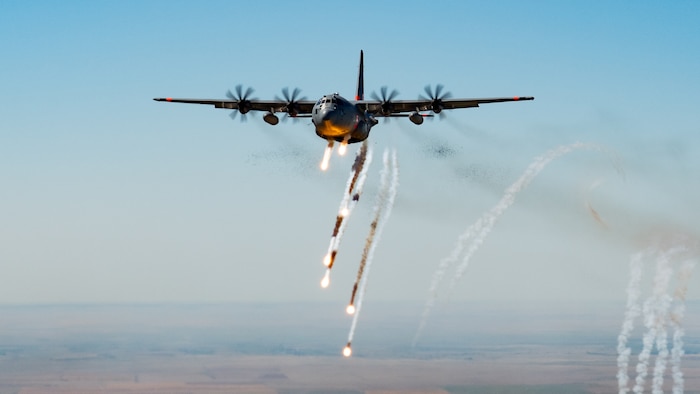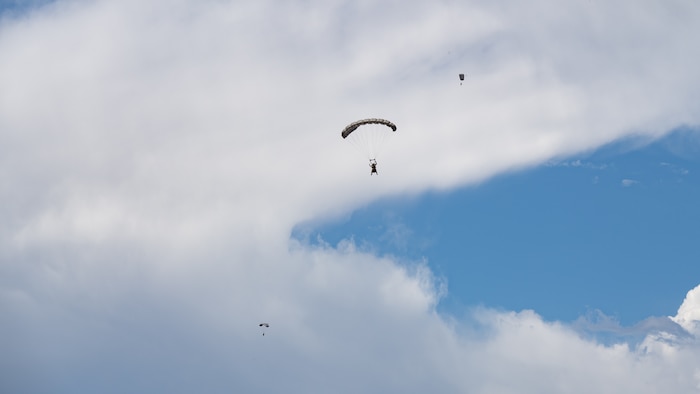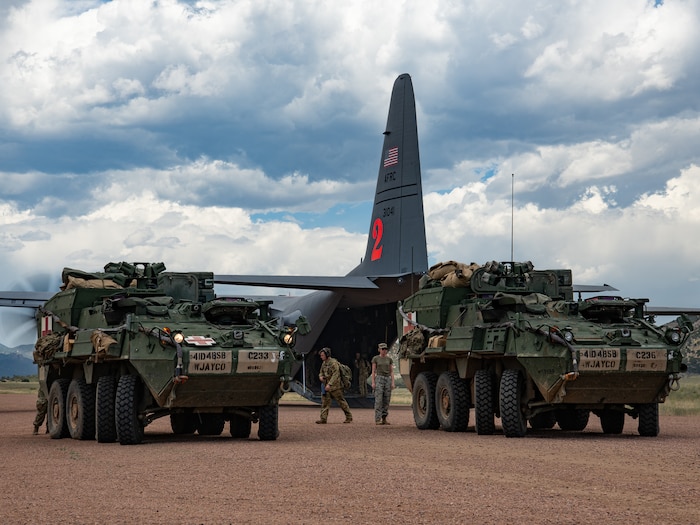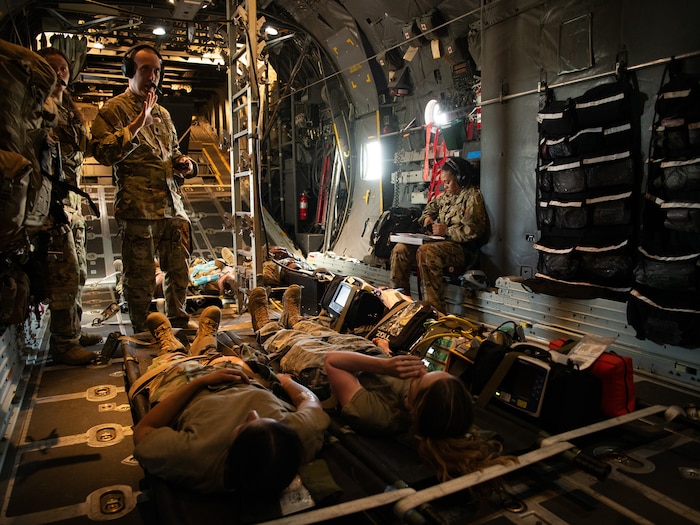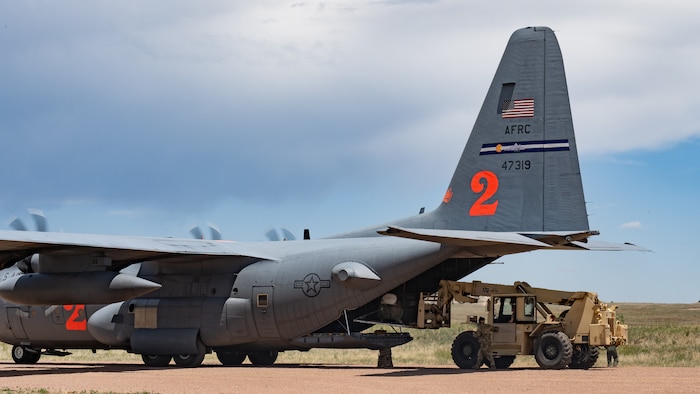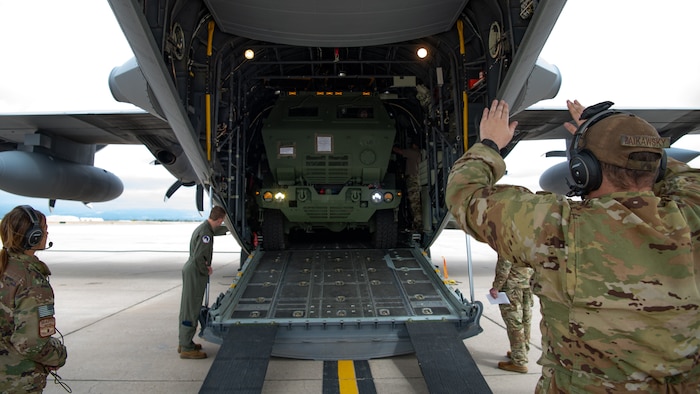The 302nd Airlift Wing participated in a 10-day exercise stressing command and control capabilities in a scenario simulating a large-scale conflict from June 3-13th, at Peterson Space Force Base and Fort Carson, Colorado.
The 4th Infantry Division's Ivy Mass exercise called for the Army, Air Force, Space Force and Marine Corps to work together in a multi-domain environment with 4ID operations in a fire support coordination role throughout the exercise.
"The Air Force contributed as a critical component to live training objectives with tangible real-world effects," said Army Maj. Matthew Van Vliet, 4 ID's lethal effects artillery planner for the exercise. "The capabilities provided by the C-130 facilitated the completion of mission essential tasks for both Army active and National Guard components."
The 302 AW flew 17 sorties employing C-130H Hercules aircraft in support of the exercise and accomplished more than 1,300 training events across multiple types of missions to include airdrop, air mobility and flight operations. The exercise also enabled more than a dozen crews to be certified and deployable in alignment with the Force Generation Cycle.
"Overall, I think we performed very well," said Air Force Maj. Michael Hall, the lead C-130 air planner for Ivy Mass. "We got a lot out of it and the goal was for us to go through the full range of military operations which is what we accomplished."
Crews integrated and trained largely with Army personnel. They inserted Special Forces personnel into multiple objective areas using various tactics including personnel airdrop, high-altitude military parachuting and military free fall. They also transported all-terrain vehicles to an austere location using expedited engine-running offload procedures at an unimproved dirt airstrip.
Airmen and Soldiers trained loading an M142 High Mobility Artillery Rocket System into the cargo bay, a light multiple-rocket launcher tactical vehicle capable of being transported by three different types of cargo aircraft.
"It's crucial for the different branches to continue and increase joint training as we look towards large-scale combat operations," said Army Maj. Matthew Tieszen, 4ID's lead staff planner for Ivy Mass. "The Army and Air Force have a long-standing relationship and joint training is vital in preparation for future conflicts."
Flight paramedics with the 34th Aeromedical Evacuation Squadron also practiced transferring patients from helicopters to fixed-wing aircraft during a simulated crisis scenario. UH-60 Black Hawk helicopter crews picked up patients from the point of injury and transported them to the airstrip where C-130 crews were on the ground waiting to pick them up and transport them to elevated stages of care.
Aircrews practiced flying in environments with varying stress conditions ranging from military freefall at night, operating without GPS capability, discharging chaff and flare during fighter engagement tactics and more.
In between training scenarios, the ground teams accomplished specialized refueling operations focused on getting aircraft refueled quickly and off the ground again. Maintenance crews also ensured the aircraft continued to fly reliably during the increased operational tempo of the exercise.
"Maintenance came through for us in a lot of ways," Hall said. "They got us the planes we needed throughout the exercise which is no small feat when we have that many missions and training lines."
After seven months of planning by more than a dozen organizations involving thousands of personnel culminating in 10 days of operations the exercise ended, and crews discussed their findings.
Some lessons learned included getting accustomed to breaking away from bubbles, Hall explained. With a myriad of organizations communicating with each other a common tendency is for personnel to stay inside familiar bubbles within their scope of operations. The exercise provided an opportunity to break free from these self-imposed boundaries and solve problems that arise from the resulting friction points.
"Within the wing I think we have multiple lessons learned now between tactics, intel, current operations, maintenance and flying operations in general regarding how we can perform better and get us out of our comfort zones," said Hall.
The 302 AW will have several opportunities to put those lessons into practice this year as the wing continues to provide its mission of world-class airlift and combat support around the world.


